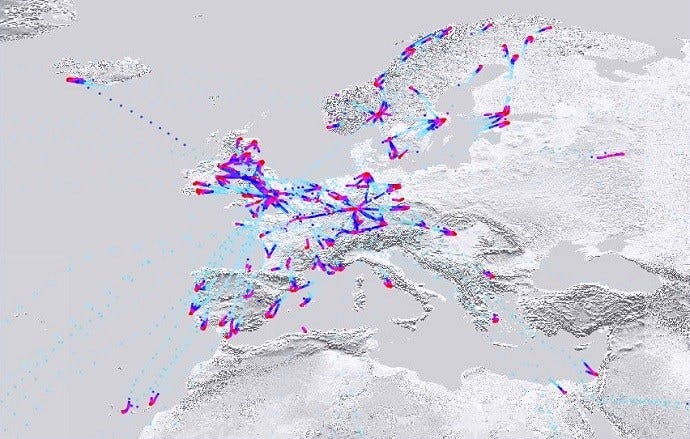With many folks afraid to fly amid the coronavirus pandemic and air carriers forced to slash flights, hundreds of planes sit idly on runways around the world as of the writing of this article.
This has, undoubtedly, canceled numerous vacations, business trips, and visits to family members. But did you know that airplanes are also responsible for collecting weather data as they transport us from point A to point B?
They have been doing so, on and off, for nearly a century. In 1998, the World Meteorological Organization created something called the global Aircraft Meteorological DAta Relay, or AMDAR. The program uses data recorded by aircraft to supplement other meteorological instruments, which helps improve the accuracy of forecasts. As planes usually cruise at or near jet stream-level altitudes, the upper-air data they provide can prove quite useful. On a typical day, more than 700,000 air temperature and wind speed/direction observations are made.
While we do still have readings taken from private and military planes, commercial aircraft clearly outnumbers the both of them combined. As an example, the European Centre for Medium-Range Weather Forecasts recently reported a 65% reduction in reports received in March, with that percentage up to 80% in April. This is likely to have at least a small negative impact on the accuracy of weather forecasts.

The images above show a drastic reduction in European AMDAR coverage between March 2 (top) and March 23 (bottom). Notice the extreme differences over Italy and parts of Eastern Europe. (Figures courtesy of Stewart Taylor, EUMETNET)
But all is not lost. Weather organizations are doing what they can to make up for the lack of data. An increase in the number of weather balloon launches was one of the first ways to account for fewer aircraft readings. There are also several new weather satellites that are able to measure wind speeds in the lower atmosphere. Additionally, many weather companies (especially private ones) are using an array of weather models called ensembles, which rely less on the aircraft data, helping to further mitigate loss of forecast quality.
So for now, experts say to continue to put faith in your forecast!
More from News 12
2:45

No criminal charges filed against Peekskill officers involved in disturbing arrest
1:51

STORM WATCH: Snow and a wintry mix expected to disrupt travel Tuesday
1:40

Racist incident in Croton sparks community unity
1:47

Yonkers parking garage condemned after being deemed unsafe by city
1:28

Car strikes pedestrian and building in New Rochelle
1:53
